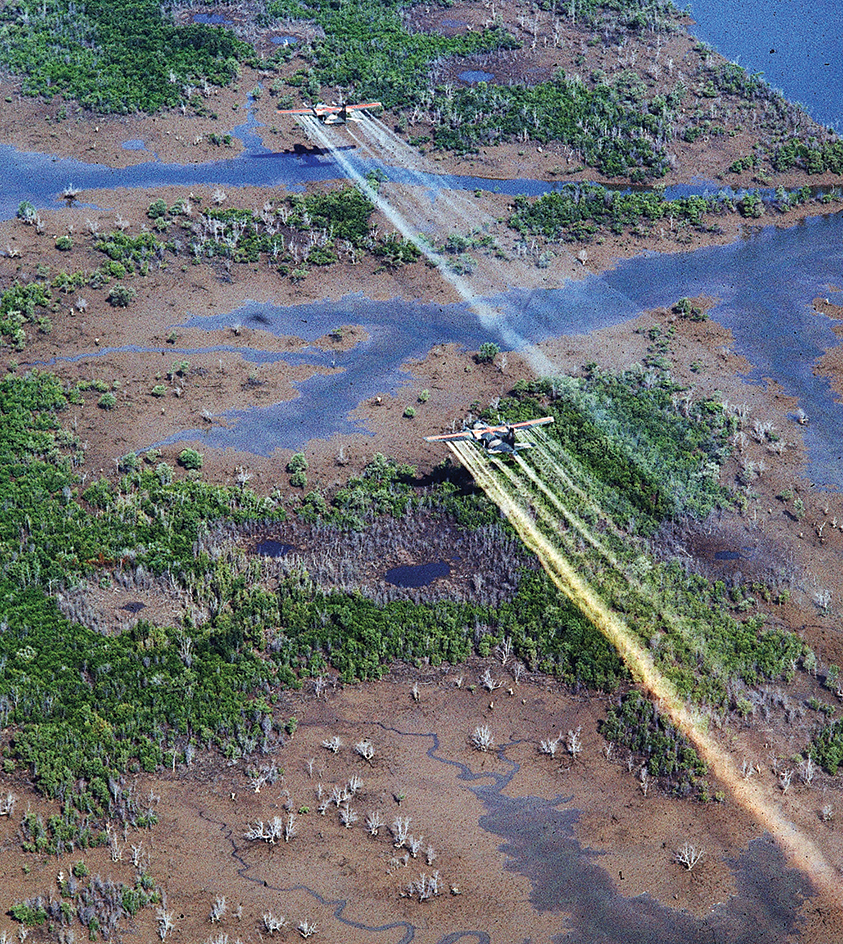Herbicide, << HUR buh syd, >> is a chemical compound used to control or destroy unwanted plants. Herbicides are sometimes called weedkillers. Farmers and ranchers use herbicides to control weeds growing among crops. People also use herbicides to eliminate weeds from lawns, parks, industrial sites, and other areas.
There are two types of herbicides, selective and nonselective. Most herbicides are selective–that is, they kill weeds but do not harm crops. Nonselective herbicides destroy all plants. Nonselective herbicides called soil sterilants are used along driveways, railroads, and other places where people do not want plants to grow.
Herbicides have been used since the early 1850’s,when salt was spread to control unwanted plants. Salt, copper sulfate, and other early herbicides were nonselective. Selective herbicides came into use in 1944 with the development of 2,4-D. This herbicide is still used to kill such broadleaf weeds as cocklebur and pigweed.
How herbicides work.
Herbicides are manufactured in the form of tiny particles or a liquid. They are sprayed on growing weeds or on the soil. Many herbicides control weeds by preventing weed seeds from sprouting. These herbicides are mixed into the soil before or at the time that crops are planted, or applied to the soil surface before crops and weeds start to grow. Some herbicides kill plants by hindering photosynthesis, the process by which plants convert carbon dioxide and water into food. Others, called growth regulator herbicides, cause plants to die prematurely by altering their growth patterns. Most growth regulator herbicides are applied after the crop or weed appears above the soil surface.
Hazards of herbicides.
In the United States, the Environmental Protection Agency (EPA) regulates the use of herbicides and registers their safe uses. The EPA has approved more than 180 herbicides. Most of them do not endanger human beings, animals, or the environment if used as directed by the manufacturer. However, some herbicides are poisonous and must be used with extreme care. All herbicides should be stored where children and animals cannot get to them.
In the 1960’s and 1970’s, a mixture of the herbicides 2,4-D and 2,4,5-T was widely used to defoliate (cause leaves to fall off) trees and brush. During the Vietnam War, this mixture became known by the military code name Agent Orange. United States forces sprayed it on the trees of jungles in South Vietnam to expose enemy snipers. During the early 1970’s, researchers found that Agent Orange and all other 2,4,5-T products contained a highly poisonous substance called dioxin. Dioxin contamination was a possible health hazard to people and animals. In 1984, the Environmental Protection Agency banned all use of 2,4,5-T.
In the early 1970’s, the American chemist John E. Franz discovered the chemical compound glyphosate, while working for the Monsanto Company, a leading maker of chemicals. Glyphosate, a nonselective herbicide, was patented in 1971. In 1974 it was marketed across the United States under the brand name Roundup. Glyphosate became a top-selling herbicide around the world, and is now one of the most-used agricultural chemicals. Each year, hundreds of millions of pounds of glyphosate are applied to cultivated land in the United States. In 2015, the International Agency for Research on Cancer (IARC), the specialized cancer agency of the World Health Organization, stated that glyphosate is “probably carcinogenic to humans.” The IARC statement gained the attention of governments and health agencies worldwide. Monsanto has challenged claims that glyphosate poses a serious health risk.

